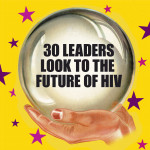April/May 1995
Andrew Sullivan orders up “Larry Kramer With Sugar on Top.”
I’d met Larry Kramer twice before. First from a distance at an ACT UP/New York meeting, where I was alternately sickened and intrigued by his theatrical extremism, by the way in which this mater familias held sway among so many young, angry children. Second in a dark corner of the Spike, a gay bar in New York City, where he accosted me about my own indolence in the time of the plague. Both times, I’d sensed someone on a different but recognizable frequency. I sensed an urgency I couldn’t muster, a faith I couldn’t begin to hold. Not that I’d been unaffected by the plague. I had just been bewildered by it. I had tried to understand the epidemic, and tend, so far as I could, to the wounded; but Kramer had clearly tried to end it.
June/July 1995
In “A Boy and His Toy” Dominic Hamilton-Little shares his boudoir buddy.
Hank, as I affectionately dub my latex buddy, is a low-maintenance angel -- just warm water and some soap. No condoms to unwrap, no conversation to unravel and no breakfast to worry about. Hank’s the ultimate safe-sex playmate -- I can throw him on the bed in all due haste and let him ravish me with no unbidden and chilling thoughts of those lab rooms words such as transmission, seroconversion and bodily fluids. Finally one rapturous night, I take it all and discover an insatiable beast within. “Lucky, lucky me! Free at last!”
August/September 1995
In “The Lady Is a Champ,” Life columnist Kiki Mason introduces fellow diva Ilka Tanya Pyan.
The woman who had made that announcement, which ran as the lead item on all the New York City news programs, conveyed a sense of feistiness as she talked about her decision to come out about her illness. Surrounded by her daughter and members of her community, she was a pillar of strength. The person walking next to me today, however, is quiet and restrained. Her frailty shows through on the street, like she’s a bird out of its nest. Glimmers of her former persona come through, though, when she tells me about going to a wedding shower for her niece. “I’ve lost about 25 pounds,” she says. "I wore this little Chinese embroidered jacket and sat around posing all afternoon, like a model in Harper’s Bazaar. But I do miss my butt. I had a beautiful butt -- I’ll show you pictures, really -- but now it’s gone."
October/November 1995
Dick Scanlan’s “Cheating on Your Doctor” relates his flight into another’s waiting room.
As in any relationship, my doctor, Ward, and I have had our problems. Last summer, when I became suddenly, and somewhat severely, symptomatic with neuropathy and fatigue, I felt protective of him, unable to share the details of my worsening condition. Instead, I fled to the office of another superlative Upper East Sider, Catherine Carlisle Hart (daughter of New York City doyenne of the arts and To Tell the Truth regular Kitty Carlisle and Moss Hart, director of my favorite musical, My Fair Lady). Dr. Hart was top flight, but I missed the familial, perhaps paternal, connection. The promise of show-biz dirt was reason enough to stay with Dr. Hart, but I realized that if I were to find myself writhing in discomfort on a hospital bed, the sound of Ward’s voice, soft-spoken at tempo allegro, would ease my aching heart and soothe my bruised soul. (Then again, so would the original cast album of My Fair Lady.)
Ward and I spent our first visit after my medical fling talking about why I turned away, and when we finished, he wanted to examine me.
“I’m not ready for that,” I told him. “I thought we were just going to talk.”
“I’d like to take a look,” he said, “and see what’s going on.”
Shyly I took off my shirt. As soon as I felt his hands on my shoulders, looking for the swollen glands I have had for more than a decade, I had to hold back tears. “I’ve come home at last,” I said, my au courant reference to Norma Desmond’s musical declaration wasted on Ward. I don’t know what I was expecting -- a lively debate on Patti versus Glenn? -- but all I got was the slightest squeeze of my shoulder. That’s all I needed, for in his hands, comforting and familiar as any man’s touch I’ve had the pleasure of knowing (save one), I felt his relief that the prodigal son -- or at least, the prodigal look-alike -- had returned, and oh, Dr. Ward, there’s no place like home.
HIGHLIGHTS
In April/May ’95, the father of us all, Larry Kramer, went off (on everything from the evil of Donna Shalala to Barbra Streisand’s broken promises) in an interview with Andrew Sullivan. The cover read “Larry Kramer’s Secret,” but in ’96 the brainy Brit revealed that he was the one hiding something -- his positive status. The clue was in his “oral sex” quiz of Kramer.
Sports Illustrated’s Bruce Schoenfeld squared off with Lamar Parks about HIV in the boxing ring. And as prevention advocates were duking it out over the condom code, POZ issued its first call for plain talk about unsafe sex, which in 1999 is still making waves among Second Wave activists.
Ilka Tanya Payan, activist, lawyer and star of the popular telenovela Angelica, Mi Vida, looked so fabulous on August/September ’95’s “Viva la Diva!” cover that few knew how sick she was (she died less than a year later). POZ’s first women’s issue.
Legendary legal eagle Tom Stoddard, who died soon after October/November ’95 hit the stands, bravely bared his Kaposi’s sarcoma lesions on the cover. In solidarity, founder Sean Strub soon switched his S.O.S. page photo to show that he, too, had KS.
Eagle Scout with hemophilia Henry Nichols won everyone’s heart. The issue marked our first POZ Honors, a look back at a year when Richard Nixon’s nephew shilled a hocus-pocus cure and O.J.’s dad, a San Fran drag queen who died of AIDS in ’85, was outed.
Intrepid treatment activist Kiyoshi Kuromiya smoked a joint at his February/ March ’96 cover shoot, first volley in the pot-for-pain battle.






Comments
Comments